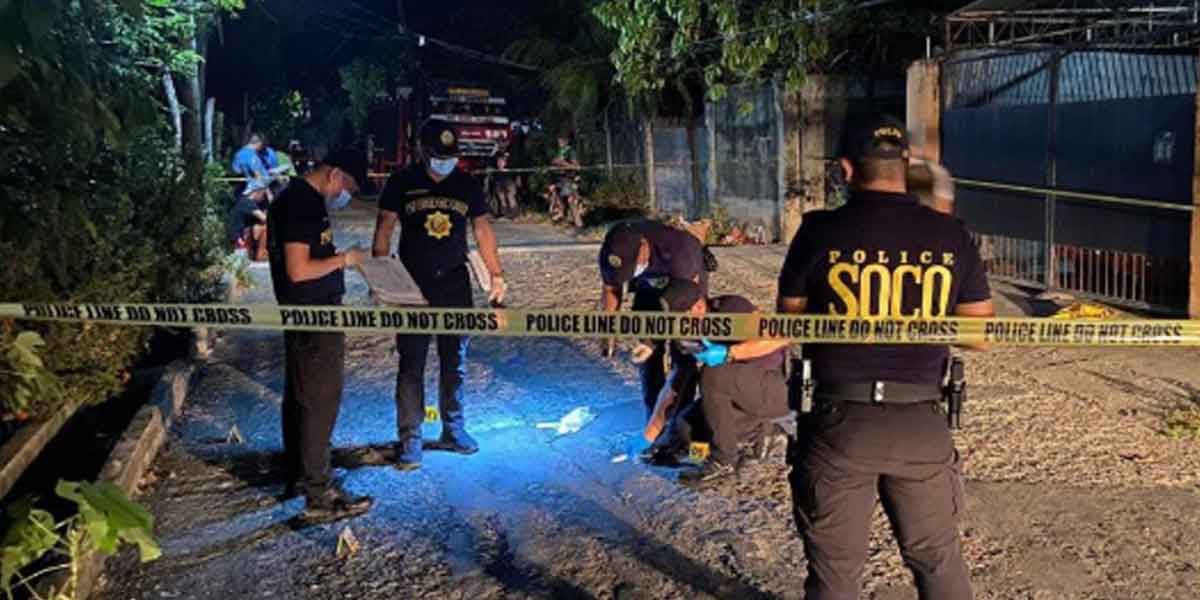 By Atty. Eduardo T. Reyes III
By Atty. Eduardo T. Reyes III
Just when everybody thought that their mood had been lightened up by the break of the new year that supposedly came with a sanguine promise of a much better year than the one being left behind, 2021 instead was ushered in by a horrendous crime that took place in a posh hotel in Makati City.
While details of the incident remain sketchy and evidence of the commission of the crime is patchy, what is tragically clear is that the body of a once effervescent young lady slumped in a tub inside her hotel room, bruised and apparently abused, had been found on the very first day of the new year.
A whirlwind of conspiracy theories then oscillated in social media speculating on all angles of the crime with forays on Sherlock-like whodunit guesses.
This columnist is making an emphatic disclaimer that he has no personal knowledge of the factual antecedents of the incident being alluded to and so this article is merely anecdotal or hypothetical in nature which will only discuss some relevant concepts on the Law of Evidence without any intention to reference the merits of the said case.
Indeed, Arthur Conan Doyle’s words of caution as spoken through his character Sherlock Holmes in A Scandal in Bohemia finds relevance, thus: “It is a capital mistake to theorize before one has data. Insensibly one begins to twist facts to suit theories, instead of theories to suit facts.”
There is an on-going vociferous debate on the accuracy of the autopsy report as it has been theorized that this will be key in solving the mystery that enshrouds the incident.
On this score, jurisprudence explains the evidential value of an autopsy or medico-legal report in this fashion, viz:
The evidentiary value of an autopsy
or medico-legal report
A medico-legal’s findings are at most corroborative because they are mere opinions that can only infer possibilities and not absolute necessities. A medico-legal, who did not witness the actual incident, cannot testify on what exactly happened as his testimony would not be based on personal knowledge or derived from his own perception. Consequently, a medico-legal’s testimony cannot establish a certain fact as it can only suggest what most likely happened. (People v. Juvy D. Aramela and Junard G. Racho, G.R. No. 225642-43, January 17, 2018).
Thus, an autopsy or medico-legal report is not primary but only corroborative evidence (or one which must be accompanied by other competent evidence). Neither is it indispensable as a crime may be proven even in its absence. To be sure, testimonies of competent eyewitnesses directly proving the commission of the criminal act would be most favored by the court at trial.
But eyewitness account may not easily be available all the time.
Curiously, in crimes perpetrated in a private room and not out in the open, and when there seems an apparent lack or inadequacy of positive statements during police debriefing or investigation to establish direct evidence of the crime and the identity of the culprits, may the case still prosper?
This is where astute and meticulous crime investigation techniques will come in handy. In cases of this nature, police investigators must not leave any stone unturned. Every single statement from persons-of-interest must be taken, recorded, and analyzed, and then the arduous process of picking the wheat from the chaff comes into play.
While on its own, a seemingly innocuous statement may not be directly related to the crime; nevertheless, when strung together with other equally relevant statements, they can constitute as “independently relevant statements” that may constitute as “circumstantial evidence” of the “existence of a fact” which the court may take into account during trial. Thus:
Three principles on, or uses of, Independently Relevant Statements
1)The doctrine on independently relevant statements holds that conversations communicated to a witness by a third person may be admitted as proof that, regardless of their truth or falsity, they were actually made.
2)Evidence as to the making of such statements is not secondary but primary, for in itself it (a) constitutes a fact in issue or (b) is circumstantially relevant to the existence of such fact.
3)Accordingly, the hearsay rule does not apply and, hence, the statements are admissible as evidence. “(Presiding Judges Tomas Eduardo B. Maddela III and Merinnisa O. Ligaya, Municipal Trial Court in Cities, Branches 5 and 1, respectively, Olongapo City, Zambales v. Presiding Judge Norman V. Pamintuan, Regional Trial Court, Branch 73, Olongapo City, Zambales/Office of the Court Administrator v. Presiding Judge Norman V. Pamintuan, Regional Trial Court, Branch 73, Olongapo City, Zambales, A.M. No. RTJ-19-2559/A.M. No. RTJ-19-2561. August 14, 2019)
And it is also a well-settled rule that for criminal liability to be proven, it is not necessary all the time that direct evidence comprising of the positive identification by an eyewitness be presented. This is because “there may be instances where, although a witness may not have actually seen the very act of commission of a crime, he may be able to positively identify a suspect or accused as the perpetrator of a crime as for instance when the latter is the person or one of the persons last seen with the victim immediately before and right after the commission of the crime.”(p. 390, The Law of Evidence by Eduardo T. Reyes III, 2019 Edition, citing Franco v. People, G.R. No. 19185, February 1, 2016).
Last and equally important, circumstantial evidence had been traditionally resorted to in crimes committed in secrecy, under the cover of darkness, or even in the midst of confusion. Too, circumstantial evidence cannot be undervalued as it carries the same weight or is just as equally strong as direct evidence. Along this line, it was held that:
Direct v. Circumstantial Evidence
The difference between direct evidence and circumstantial evidence involves the relationship of the fact inferred to the facts that constitute the offense. Their difference does not relate to the probative value of the evidence. X x x Direct Evidence proves a challenged fact without drawing any inference. Circumstantial evidence, on the other hand, “indirectly proves a fact in issue, such that the fact- finder must draw an inference or reason from circumstantial evidence. X x x The probative value of direct evidence is generally neither greater nor superior to circumstantial evidence. The Rules of Court do not distinguish between “direct evidence of fact and evidence of circumstances from which the existence of a fact may be inferred. The same quantum of proof is still required. Courts must be convinced that the accused is guilty beyond reasonable doubt. (People of the Philippines v. John Sanota y Sarmiento, Deo Dayto y Genorga @ “Rubrob” and Rolando Espineli y Acebo @ “Landoy”, G.R. No. 233659. December 10, 2019).
The opaque circumstances that surround an incident does not necessarily obviate proof that a crime was committed. But it must be emphasized that each circumstance must be duly proven and thread together with the others in an inextricable way as to lead to no other conclusion about the guilt of the suspect/ accused. As already stated, circumstantial evidence once duly established, will have equal weight as direct eyewitness account in proving the crime and its perpetrators.
Yet again, we cannot rush to hasty conclusions. A final caveat is called for. The rule on circumstantial evidence should be applied with extreme caution because to quote Arthur Conan Doyle again: “Circumstantial evidence is a very tricky thing. It may seem to point very straight to one thing, but if you shift your own point of view a little, you may find it pointing in an equally uncompromising manner to something entirely different.” (The Boscombe Valley Mystery, p. 309, Volume II, Sherlock Holmes, The Complete Novels and Stories).
(The author is the senior partner of ET Reyes III & Associates- a law firm based in Iloilo City. He is a litigation attorney, a law professor and a law book author. His website is etriiilaw.com).






















